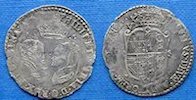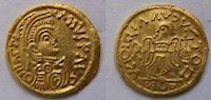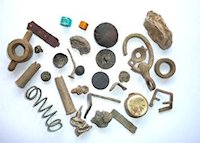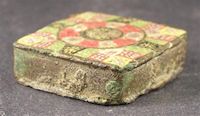
Figure 1: UKDN WORD magazine, April 2012 ©United Kingdom Detector Net (UKDN)
Having shown how the forum has grown and developed, UKDN really succeeds in great part because of the equality shown to all of its members and the respect that is given, and expected from, a mature and informed community. Our members provide a wealth of freely given knowledge, be it for basic tips on getting the best from their equipment, to identifying that 'wotsit' that has been bugging them for years. The knowledge base of people from so many varied professions and years in the hobby rarely fails to solve member queries and, as such, UKDN is a first port of call for many in need of answers. UKDN members also contribute to their own monthly online magazine called UKDN WORD, which is packed with informative ideas, stories and reference articles.
Many articles have been written by archaeologists, both professional and amateur, covering a wide range of subjects. The magazine remains very popular with members and non-members, with hundreds of downloads a month. It is available free, online, each month at Calameo and provides an additional source of reference and information that can be easily kept and referred to when required.
One of the most popular aspects of the forum is the section where pictures of members' finds can be posted and shared or where they can request an identification or further information. Many finds are posted, from the truly mundane to the fascinating.
UKDN Finds Advisors are highly experienced in identifying coins and artefacts, including some non-metallic items such as worked flints and, to a limited extent, pottery sherds, bone, and precious and semi-precious decorative material. Again, they are all volunteers and members of the forum who have been asked to become Finds Advisors because of their knowledge and willingness to share that with others. They are all metal-detector users themselves and have, through their own desire for an understanding of the objects that they find, become extremely knowledgeable in their own particular fields of study.
All members are, however, encouraged to put forward suggestions to help with identification of members' finds if they can; this fosters an atmosphere where all members can feel included and can expand their personal knowledge of historical items and on research techniques. Often this has led to a positive identification of an obscure item. There have been some fantastic finds posted over the years and some rare coins and artefacts identified and recorded in among the 'normal', daily finds.
Figures 2-11 show some of the individual finds that have been submitted for the UKDN 'find of the month' competitions.










Figure 2: Anglo Saxon gold thrymsa. Witmen-derived type. Discovered in Kent (2011). ©UKDN
Figure 3: Roman zoomorphic pendant. Discovered in Suffolk (2011). ©UKDN
Figure 4: Roman, enamelled fantail brooch. Discovered in Lincolnshire (2011). ©John Heath
Figure 5: Medieval, enamelled, heraldic harness pendant. Discovered in 2008. ©UKDN.
Figure 6: Silver hawking vervel of William Russell, 5th Earl and 1st Duke of Bedford. Discovered in Bedfordshire (2011). ©UKDN
Figure 7: Papal Bulla of Pope Alexander IV, AD 1254-1261. Discovered in Hampshire (2011). ©UKDN
Figure 8: 16th-century silver cap hook. Discovered in Lincolnshire (2011). ©UKDN
Figure 9 Philip and Mary silver sixpence dated 1555. Discovered in West Sussex (2011). ©UKDN
Figure 10: Gold tremissis of Byzantine emperor Justinian II. Discovered in Kent (2011). ©UKDN
Figure 11: Silver halfpenny of Edward III, Berwick mint. Discovered in Lincolnshire (2009). ©United Kingdom Detector Net (UKDN)
We do not find, or expect to find, such fine examples on every trip and Figure 12 shows the types of finds we make from 99% of the outings! This raises an interesting question, and one that has been asked of the membership on the forum several times. What is the motivation to carry on metal detecting if most of what we find is similar to this?

Figure 12: An average day of metal detecting finds (South Yorkshire). ©United Kingdom Detector Net (UKDN)
The answers are as varied as the mixture of people who join the forum. For some it is the fresh air, countryside and solitude. For others it is the opposite and they enjoy the companionship of other like-minded people in a club environment where they can detect together and discuss their finds. Many enjoy the hobby as a means of gentle exercise after an illness or in their later years. The overriding response to this question when asked, however, is that you just do not know what is going to be in the next spade full of earth. Is it going to be another piece of agricultural scrap or might it just be that coin or artefact with a real story to tell? To break open a clod of earth and be the first person to hold an object, possibly for hundreds or thousands of years, is all the motivation that many need. The chance to see what other people are finding and to post up their own finds on the forum for others to see helps to inspire the membership and keep that motivation alive.
Field archaeologists may wish to take note: it may be worth considering posting up any unidentified finds that you cannot stretch the budget to get an expert to report on; we cannot promise a full-blown report (although that may be possible under certain circumstances) but we can offer an educated opinion and give references to other examples. Try us, we are free and happy to help!
Another service that the UKDN members can provide is a nationwide, free, search facility for members of the public who have lost personal items such as rings, keys and so forth (very popular over the last few winters), and farmers who have lost valuable pieces of machinery. One member even found his grandmother's original engagement ring more than sixty years after it was thrown into a field during a 'heated discussion' with her fiancé (the finder's grandfather—so the argument could not have ended their relationship!).
This willingness to help in the community, and especially the farming community, is an important factor in building trust and acceptance for our hobby and encourages people to become more involved in, and therefore better educated about, what we do. This is part of what many in the hobby in general also seek to achieve by organising talks to local history groups and putting on exhibitions or display tables at local fetes, village shows or agricultural shows. This brings the locally found heritage to the local people in a more intimate and personal way through being able to handle the finds and to talk about them and the area in which they were found. Museums are very good at this with children but seem to struggle when it comes to involving adults.
Through their own endeavours some members have become involved in archaeological projects, be it carrying out detecting surveys on battlefield sites to getting down and dirty on an excavation or carrying out geophysical surveys, some even embarking on archaeology degrees. In 2009 and 2010 some forum members, including Tom Redmayne, were contacted by the Portable Antiquities Scheme to take part in the Gabii project, a multi-institutional, archaeological initiative focused on the excavation and research of the ancient city of Gabii, located to the east of Rome.
These members were real ambassadors for the UK hobby and emphasised how metal detectors, used correctly by experienced operators, can be a useful tool on excavations and other projects. The Gabii project is to be congratulated for their avant-garde approach in inviting metal detectorists to their project, especially as Italy has not been very receptive to this in the past. It is hoped that members will be invited back in future excavation seasons. It is nice to see that some community archaeology projects involve more than just recording buildings and washing test pit finds.
Reference was made earlier in the article to some of our members who are carrying out their own personal research studies into certain artefact groups. One of these is a study of Roman seal boxes being carried out by one of the authors of this article. If anyone reading this knows of any examples lurking in finds catalogues, please contact Kev with the details for his database. He is interested in finds from all countries, not just the UK. It is hoped that a detailed article on his findings will be accepted for publication within the near future.

Figure 13: Roman, enamelled seal box (plan view). Discovered in Lincolnshire (2009). ©United Kingdom Detector Net (UKDN)
Sometimes, however, there is still a reluctance to follow best practice guidelines, even with all the encouragement and information that UKDN offers. The stunning Roman enamelled seal box shown in Figures 13 and 14, for example, found on the Lincolnshire/Nottinghamshire border, was reported to Kev Woodward through the forum and recorded by him as part of his own research.

Figure 14: Roman, enamelled seal box (profile view). Discovered in Lincolnshire (2009). ©United Kingdom Detector Net (UKDN)
This object is not on any other database owing to concerns from the finder regarding previous 'traumatic' treatment by archaeologists several years previously. However, recognising the importance of the find, he still wished the find spot to be recorded with a researcher and asked if Kev would do this. He freely admitted at the time that had he not joined UKDN and seen how detectorists and archaeologists could discuss things in a mutually respectful manner and how recorded information about finds is so important, he would never have had it recorded. This is not an uncommon occurrence these days and shows that the message about the importance of recording has sunk in and even some of the older, 'dinosaur' detectorists are seeing the light! There are, however, many archaeologist 'dinosaurs' who are not prepared to accept that detectorists have something to offer to the heritage record. It is unfortunate that there does not seem to be an internal drive within the profession to right this misconception. Maybe it is time to make a start, before detectorists feel that it is all just one-way traffic? The profession has to be willing to sideline the extremists and accept that the recording system we have now is not perfect but probably the best we will get within the immediate future. It also has to accept that detectorists are not the 'great unwashed', uneducated rabble some would make others believe. An emotive statement may be, but one only has to read what Heritage Action and others say about the hobby to substantiate it. If these changes of attitude are not taken on board by the mainstream of the profession then the majority of those pursuing the hobby of metal detecting may well turn their backs on recording, with all the damage that would cause. There is a strong and growing feeling within the hobby that it is time for the heritage profession to offer some positive feedback to the multitude of responsible metal detectorists. After more than fifteen years of getting as many as possible of their colleagues to record their finds and detect responsibly, they have seen little sign of attitudes in the profession, as a whole, changing for the better towards the hobby.
This is the type of issue that we at UKDN see on an almost weekly basis; a long-term, ingrained mistrust in many from the metal detecting and heritage camps that we are doing our best to break down by dialogue, education and co-operation. But we cannot do this alone. Tony Page of Lincoln Museum, in 1986, made a very concise statement regarding the 'barrier' between professional archaeology and 'amateurs' that is just as, if not more, relevant today as it was all those years ago.
'There are few angels on either side of this barrier and probably few devils but, as usual, it is the conduct of the devils which colours ones attitude to the rest. I feel that the time is long overdue for the professionals to realise the great potential for archaeology which lies with amateurs of all types and to make positive efforts to harness this energy for the common good. There are many problems to be ironed out but that can only happen through co-operation. The damage to archaeology by the action of amateurs is minute compared to our major problem, the destruction of our heritage through agriculture, industry and communications.' (Page and Field 1986, 71).
In his enlightened talk at the Newcastle Conference, David Connolly (BAJR) rightly stated that the way to gain maximum, recoverable knowledge was by proactive contact with all relevant bodies to gain a first-hand insight, rather than unworkable impositions (Connolly 2010).
Internet Archaeology is an open access journal based in the Department of Archaeology, University of York. Except where otherwise noted, content from this work may be used under the terms of the Creative Commons Attribution 3.0 (CC BY) Unported licence, which permits unrestricted use, distribution, and reproduction in any medium, provided that attribution to the author(s), the title of the work, the Internet Archaeology journal and the relevant URL/DOI are given.
Terms and Conditions | Legal Statements | Privacy Policy | Cookies Policy | Citing Internet Archaeology
Internet Archaeology content is preserved for the long term with the Archaeology Data Service. Help sustain and support open access publication by donating to our Open Access Archaeology Fund.
File last updated: Thu Feb 28 2013